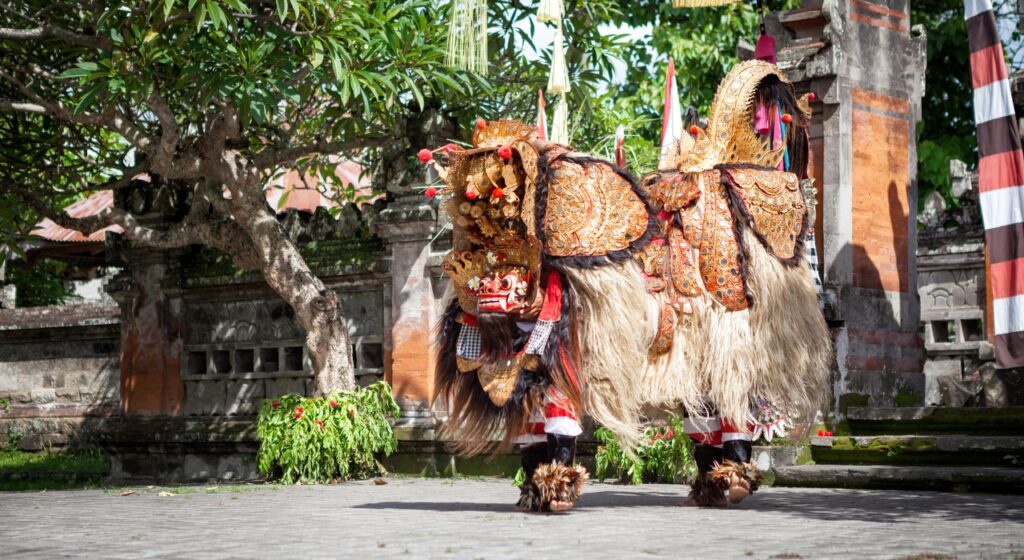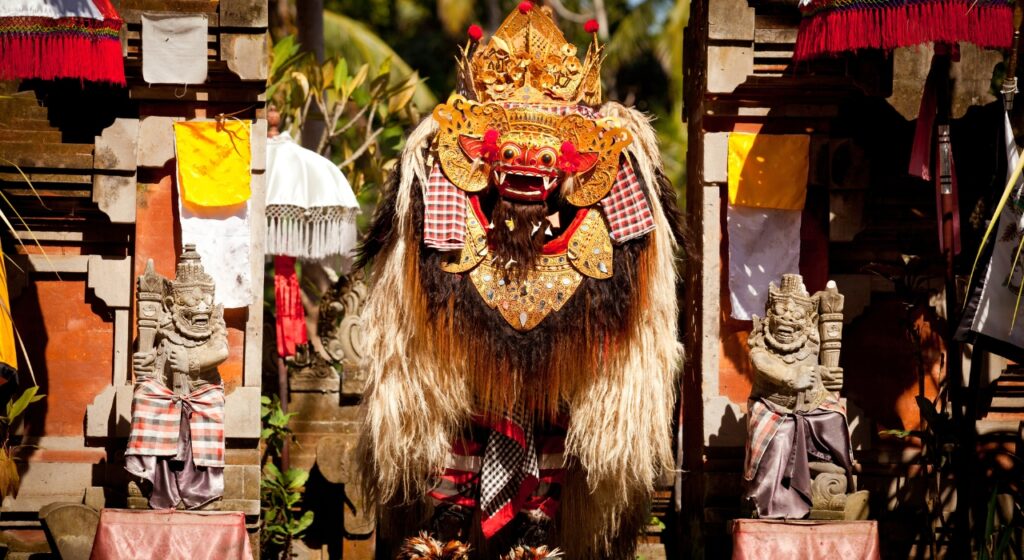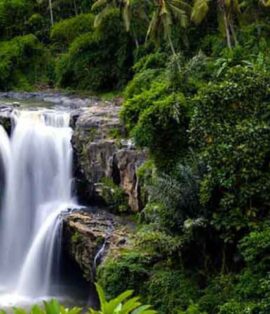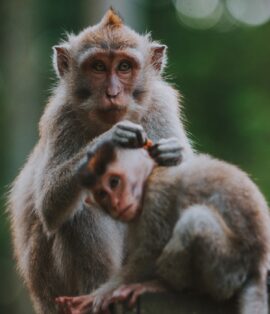Barong Dance
The Barong Dance is one of Bali’s most iconic and culturally significant traditional performances, deeply rooted in Balinese mythology and Hinduism. It’s a vibrant and dramatic storytelling dance, primarily depicting the eternal battle between good (Dharma), personified by the mythical creature Barong, and evil (Adharma), embodied by the demonic witch Rangda.
Here’s a breakdown of its key aspects:
1. The Characters:
- Barong: The king of spirits and leader of the forces of good. He is often depicted as a shaggy, lion-like creature with a fierce but benevolent face, adorned with elaborate carvings, mirrors, and thick fur (often made from pandanus or palm fibers or even crow feathers). The Barong is typically played by two dancers: one controlling the head and front legs and the other the hind legs and tail, moving in unison like a playful yet powerful beast. There are various forms of Barong, with Barong Ket (a mix of lion, tiger, and ox) being the most common in this dance.
- Rangda: The antagonist, a terrifying demon queen and leader of evil witches. She is portrayed as a monstrous figure with long, disheveled hair, sharp fangs, a protruding tongue, and long, claw-like nails, designed to instill fear.
- Monkeys: Often appear at the beginning of the dance, playfully interacting with the Barong.
- Other characters: The dance can also feature supporting characters like Dewi Kunti, her son Sadewa, Patih (prime minister), and various witches or soldiers, adding to the narrative.
2. The Story (Calon Arang):
The most common narrative performed is based on the Balinese mythological tale of Calon Arang. The story typically unfolds as follows:
- The dance often begins with Barong and playful monkeys in a peaceful setting.
- Rangda appears, wreaking havoc and spreading sickness. She targets Sadewa, the son of Queen Kunti, and attempts to sacrifice him.
- Rangda uses black magic to influence Queen Kunti and her prime minister, compelling them to deliver Sadewa to her.
- However, the god Shiva intervenes and grants Sadewa immortality.
- Rangda tries to kill Sadewa but fails due to his newfound immortality. She then surrenders and asks Sadewa to purify her from her evil deeds.
- A dramatic sequence, often known as the Keris Dance, follows. Rangda casts a spell on Barong’s followers (representing Airlangga’s soldiers), causing them to fall into a trance and attempt to stab themselves with their keris (traditional daggers).
- Barong, however, uses his magical powers to make them invulnerable to the daggers, showcasing his protective nature. The dancers, still in a trance, repeatedly stab themselves but remain unharmed, a testament to Barong’s power.
- The dance culminates in a fierce battle between Barong and Rangda. Despite Rangda’s powerful magic, Barong ultimately triumphs, forcing Rangda to flee, symbolizing the victory of good over evil and the restoration of cosmic balance.
3. Cultural Significance:
- Balance of Good and Evil (Rwa Bhineda): The Barong Dance is a profound philosophical representation of the Balinese concept of Rwa Bhineda, the duality of opposing forces (good and evil) that coexist and must be kept in balance for harmony in the universe. The dance doesn’t necessarily depict the complete annihilation of evil, but rather its defeat and the re-establishment of equilibrium.
- Protection and Spiritual Healing: Traditionally, the dance was performed during times of disease, misfortune, or imbalance, believed to ward off evil spirits and restore health and prosperity to the community.
- Sacred Art: Many Barong dances are considered sacred rituals and are performed during religious ceremonies and temple festivals, rather than solely for entertainment. The masks and costumes themselves are often considered sacred objects.
- Community Engagement: In traditional performances, audiences may participate by chanting and clapping, encouraging the battling forces and contributing to the spiritual energy of the event.
4. Performance Characteristics:
- Music: The dance is accompanied by the rhythmic and dynamic sounds of a gamelan orchestra, with instruments like gongs, drums (kendhang), and various metallophones, creating a captivating atmosphere.
- Movement: The Barong’s movements are often playful, majestic, and powerful, while Rangda’s are menacing and frantic. The kris dancers’ movements are intense and trance-like.
- Costumes and Masks: The elaborate and often heavy costumes and masks are central to the performance, giving life to the mythical characters. The craftsmanship of these items is highly revered.
- Trance State: A unique and sometimes dangerous aspect of the dance, particularly during the Keris dance, where performers can enter a trance state, believed to be possessed by the spirit of the Barong, making them invulnerable to the daggers.
The Barong Dance is not just a theatrical performance; it’s a living tradition that embodies the spiritual beliefs, philosophical insights, and artistic mastery of the Balinese people, offering a mesmerizing glimpse into their rich cultural heritage.












